ANNISTON ARMY DEPOT, Ala. - The depot began work Nov. 16 on the first of 312 Strykers to be reset here in a workshare agreement with General Dynamics Land Systems, the maker of the Stryker.
Anniston Army Depot and GDLS have entered into a public-private partnership, or P3, that puts mechanics from both entities-government and private industry-side by side on the production line.
While Stryker reset work is new to the depot, ANAD and GDLS continue to work two other Stryker programs on the installation-new production and battle-damage repair. However, GDLS has carried out Stryker reset programs at Fort Lewis, Wash.; London, Canada; and Qatar in the Middle East.
"This type of partnership is a first for the depot in the sense that we've never had a program where work on the vehicles is split 50/50 between the depot and the contractor," said Janice Hammond, a leader on depot's production line. "When it's all done, we will have set the bar pretty high."
Joining the skill sets of both parties is a craft on its own, according to representatives from both ANAD and GDLS. While the depot is known for the repair and overhaul of legacy systems like M1 tanks and M113 personnel carriers, GDLS is an original equipment manufacturer and didn't become involved in maintenance work until the 1990s when P3s first came on the scene.
"It's been a win-win for everybody. We've all just got to make sure that we do well and prepare ourselves for future work," said Eric Bryan, production supervisor for GDLS.
With other programs, ANAD uses hardcopy depot maintenance work requirements, or DMWRs, and technical manuals on the shop floor that guide mechanics and welders in their job to refurbish combat vehicles.
For Stryker reset, the instructions are electronic and accessed by a laptop.
"The depot is adapting well to the new processes," said Tim O'Dell, supervisor in the depot's combat vehicle repair facility, where the bulk of the reset work is being performed.
Depot mechanics and welders who were overhauling heavy, tracked vehicles like the M9ACE and the Armored Vehicle Launched Bridge prior to Nov. 16 are now rebuilding Strykers. "We've always been versatile," said O'Dell.
"There's a bunch of talented people on this line."
Billie Hooper, depot program manager, said the partners are focusing on sustainability within the Defense industry through the Stryker reset work and the ongoing training to repair and overhaul Strykers. "Our relationship with our partner GDLS will grow with this new work," he said.
Strykers are being reset in three phases, not counting the removal of the slat armor. "De-slatting," as it's called, is performed adjacent to the motor pool where the Strykers were delivered in October.
Phase I
Aca,!Ac Joint technical inspection performed
Aca,!Ac Power pack (engine and transmission) removed and serviced
Aca,!Ac Differentials removed and tested; minor repairs made
Aca,!Ac Engine cover and cooling grill, seats, floor plates and batteries removed
Aca,!Ac Vehicles taken to wash rack
Phase II
Aca,!Ac Brakes are inspected, repaired and cleaned
Aca,!Ac Differential devices installed
Aca,!Ac Other repairs made based on technical inspection checklist
Aca,!Ac Upgrades/retrofits applied
Aca,!Ac Static and road tests performed
Aca,!Ac Vehicles sent to the paint booth
Phase III
Aca,!Ac Fully reset Strykers inspected again
Aca,!Ac Defense Contract Management Agency performs final inspection
Aca,!Ac Partners "sell" vehicles back to government

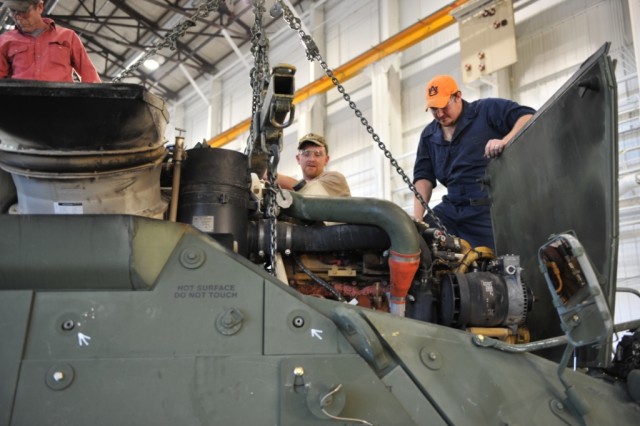
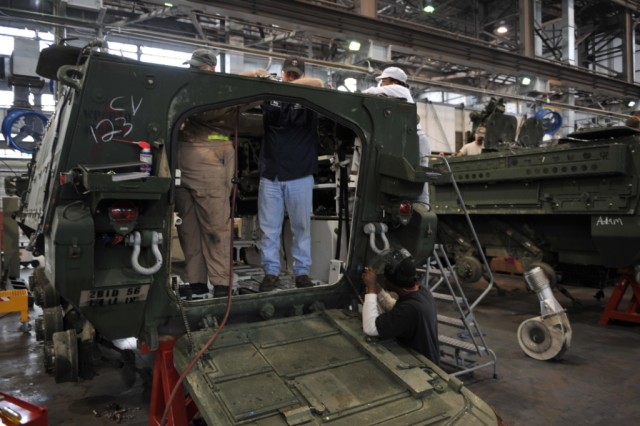

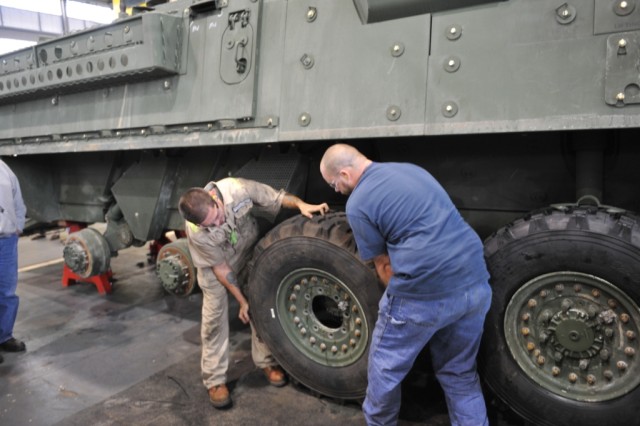
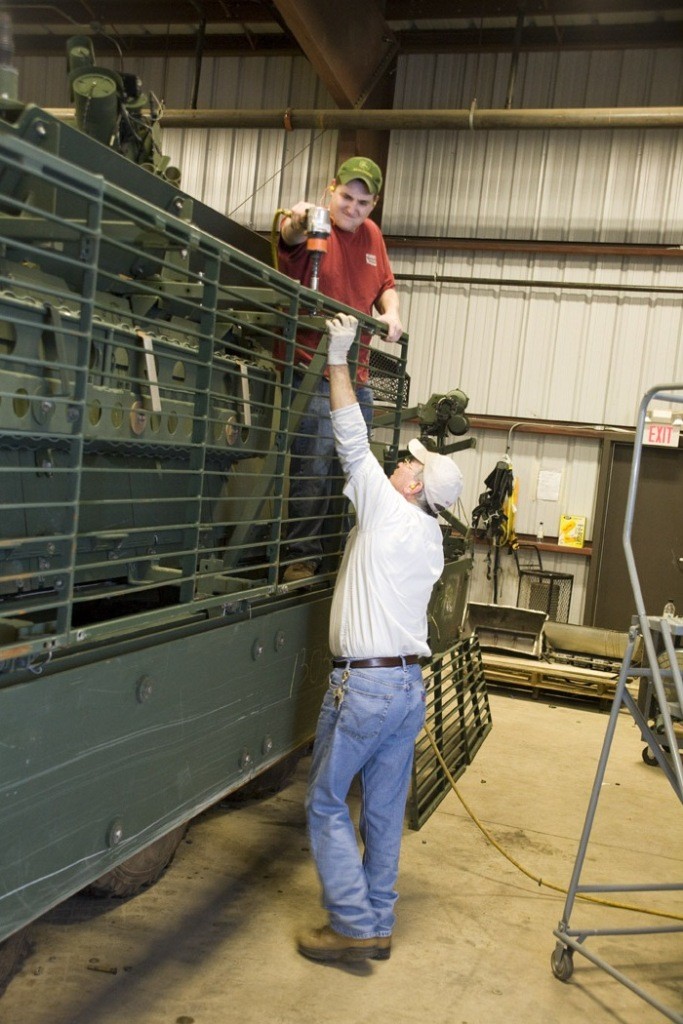

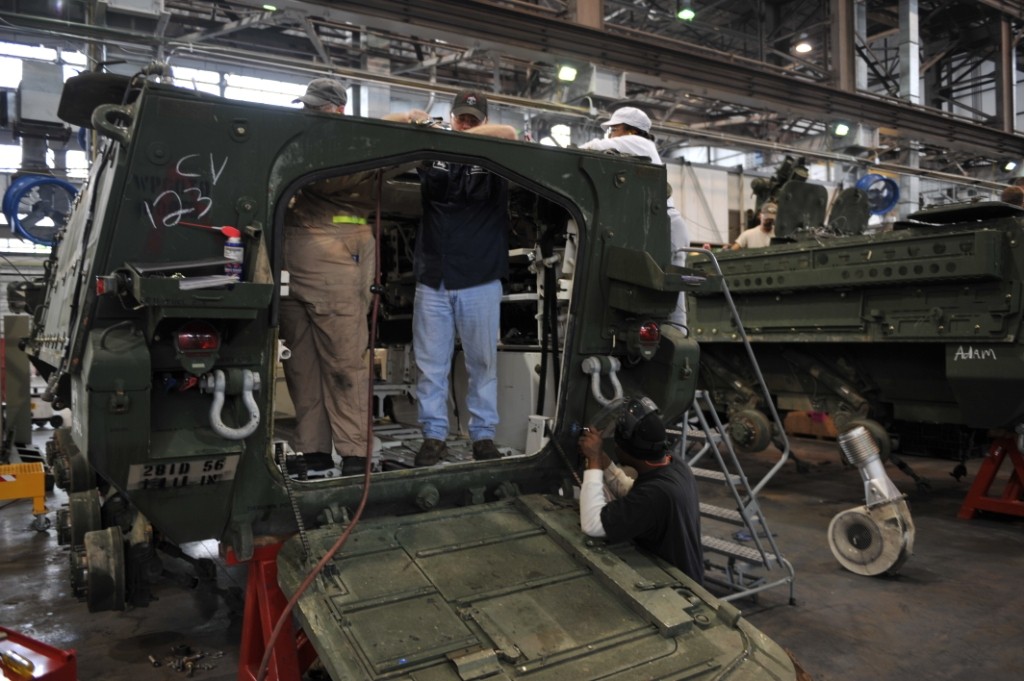


Social Sharing